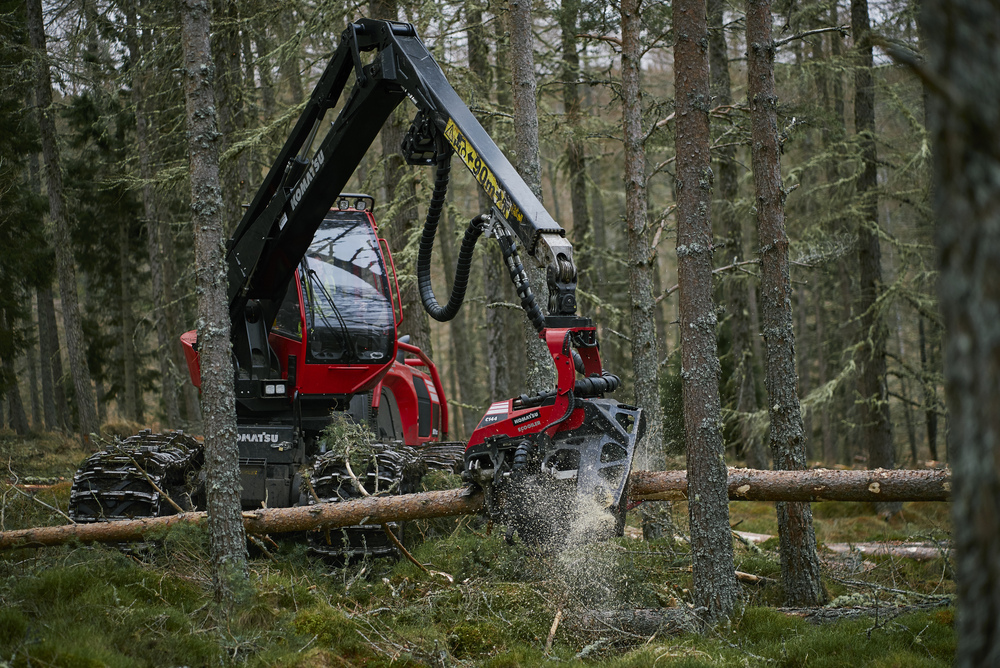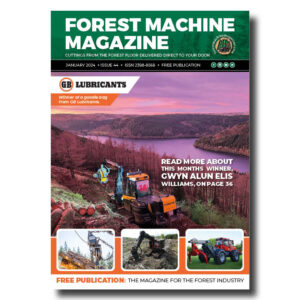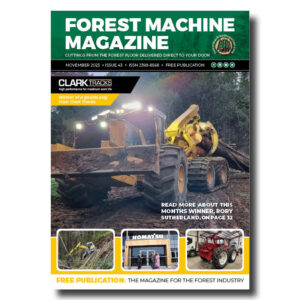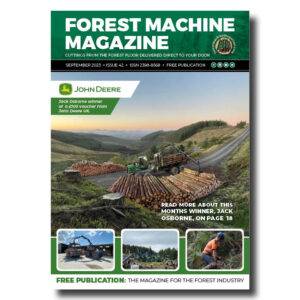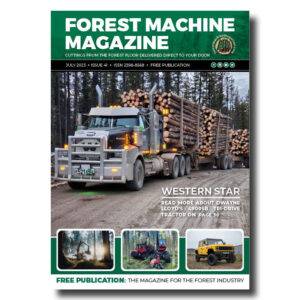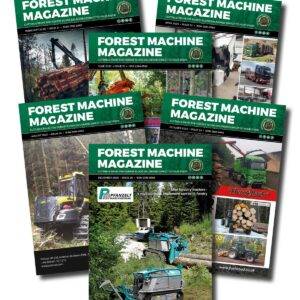Harvesting timber is a key part of what FLS do, so we thought we’d share some of the clever technology used by our teams.
One of the ways we fell timber is with harvesting machines that use sensors to measure the diameter of the tree. The machine grips the trunk of the tree using a grapple harvesting head, then cuts it at the stump with its internal chainsaw, before lifting it free from the ground and removing the branches with static knives as the tree passes through the head. Our highly trained operators use the information, measured by the harvester, to determine how the product is cut. The tree is then arranged for collection by a forwarder machine which will move and stack the cut timber ready for collection by lorry.
We use different parts of the tree for different products, so nothing is wasted.
As well as the mechanical process of felling and processing the tree, the harvesting machine gathers and displays data that is used to help the operator and harvesting forester work safely and efficiently. This data can be seen both in the cab of the machine and remotely in our regional offices, giving our teams an oversight of how the felling is going.
-
That’s a remarkable amount of work hours for a single machine, the Norcar 600 owned by Erkki Rinne is taken well care of, it even has the original Diesel engine.
-
Kieran Anders is a forestry contractor working in the lake district. His work involves hand cutting and extracting timber using a skidder and tractor-trailer forwarder.
-
It is not possible to eliminate chain shot, but there are simple steps that can be taken to reduce the risk.
-
Arwel takes great pride in the fact that the mill has no waste whatsoever, “the peelings are used for children’s playgrounds, gardens and for farm animals in barns in the winter and the sawdust has multiple uses in gardens and farms as well.
-
Timber hauliers need to encourage young blood in, and also look after the hauliers we have, we need make the sector a safe and positive place to work.
FIND US ON
Related Posts
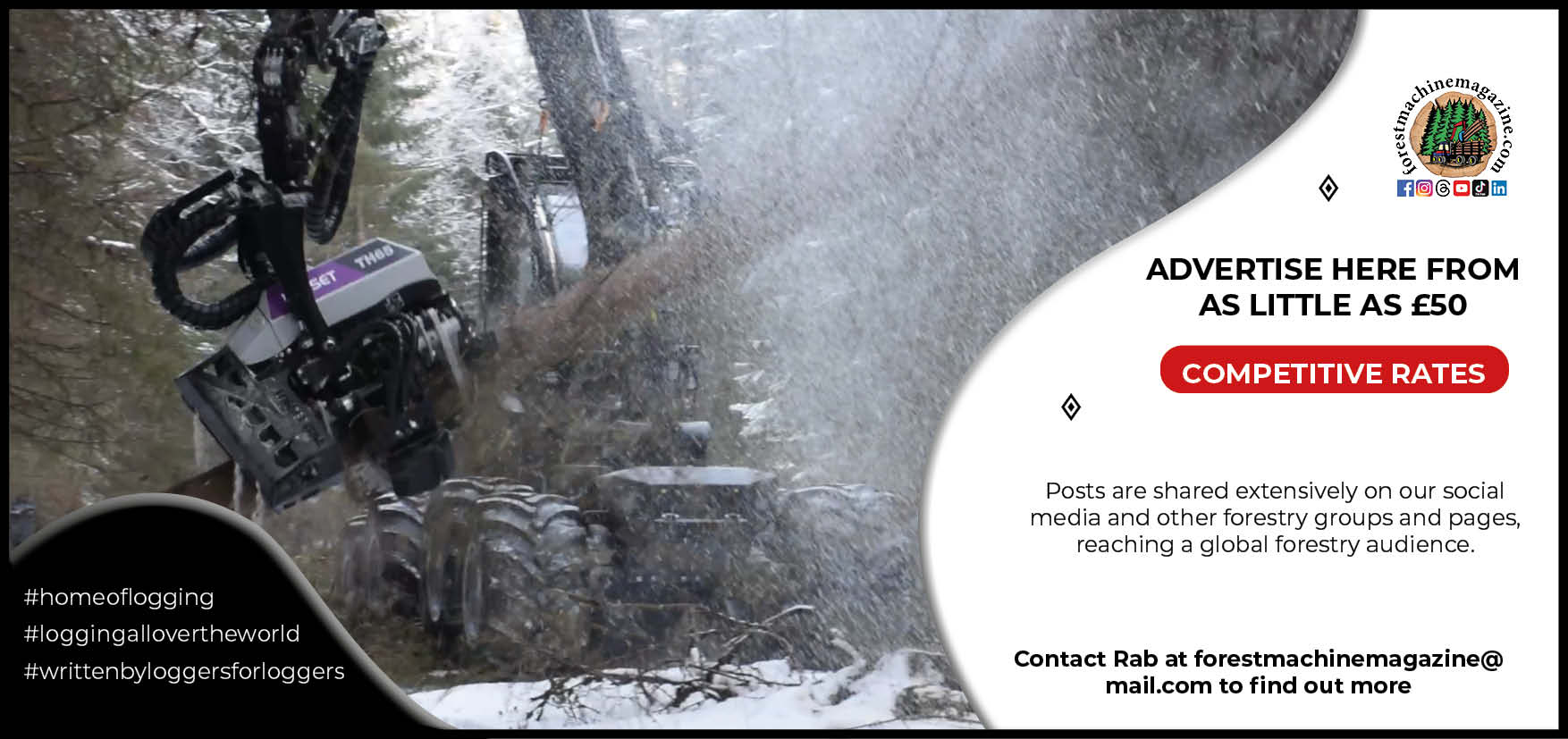

This includes:
- how hard the machine is working – displayed in RPM
- how much fuel is used and remaining
- a live production total – showing exactly what has been cut and how much
- hourly data of how many trees per hour, the volume of timber per hour, and how much fuel is used per hour
- the average tree size on the site (per species)
- shift start and end times, including breaks


Maps and spatial information can also be sent directly to the harvester and displayed on screen in the cab. This means the operator can see exactly where they are on the site and set proximity alarms to make sure the machine stays within a set zone. This provides our operators with useful additional alerts to the physical marking of features in the forest.
The data that is collected makes it easier to predict how long sites will take to harvest based on historical production for similar tree sizes. This makes it easier for coordinating and planning when machinery can be moved to a new site. Information that helps with maintenance, such as production hours and fuel consumption, is also sent to Mechanical Engineering Services who look after the machines. Once felling is complete, the area is replanted and the growing cycle begins again. This sustainable process provides raw materials for things like wood fuel, paper and packaging, and construction materials. All our forests are independently certified as being responsibly managed under FSC certification. This ensures we’re producing sustainable timber while looking after Scotland’s forests.


Forest Machine Magazine is written and edited by a forest professional with over 40 years hands on experience. We are dedicated to keeping you informed with all the latest news, views and reviews from our industry.
To support us you can subscribe to our bi-monthly magazine which is delivered to your door from only £15 per year.
Subscribe here
#homeoflogging #writtenbyloggersforloggers #loggingallovertheworld

